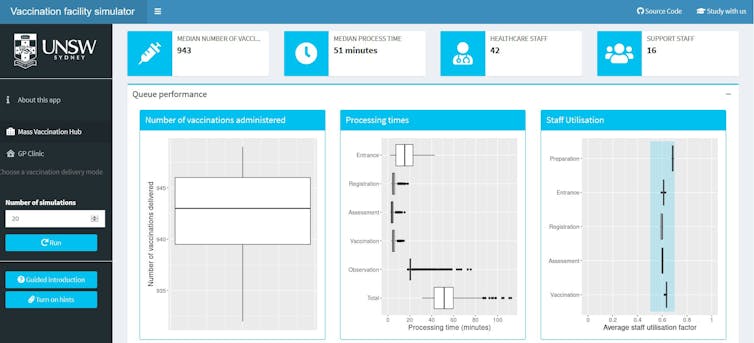Our vaccine rollout needs all hands on deck after AstraZeneca news, mass hubs included
UNSW researchers have used mathematical simulations of waiting in line, known as stochastic queue network models, to model the process of running a vaccination clinic.



